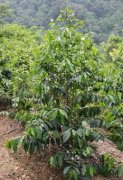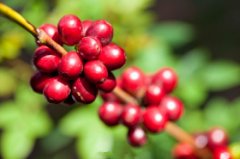The birth process of boutique coffee
A good cup of coffee comes from small coffee beans, after a long time and many elaborate craftsmanship, and integrated into the efforts of countless people to achieve, it can be said that cups are not easy to come by.

There are seven decisive factors for the quality of a cup of coffee. The first three depend on the farmers who grow coffee beans-the variety of coffee trees, the origin of coffee, and the method of planting-are called the basis for determining the quality of coffee; the fourth factor depends on the picker. So far, we can also improve the quality and taste of coffee. After that, we can only maintain or destroy the quality of the coffee, but we can't make it better. Then there are three crucial steps-the transportation and storage of coffee beans; the experience and techniques of coffee roasters and the way coffee beans are roasted; and finally, the grinding and production of coffee beans. All of these seven factors can affect the taste of coffee, which is closely related to the quality of coffee.
Types of coffee beans
There are more than 20 types of coffee beans, but only two are the most important. The vast majority of the world's top quality coffee comes from them-70 per cent of global coffee production comes from Arabica beans and is hailed as the best coffee bean variety because of its low caffeine content and excellent taste based on it. Less than 30 per cent of coffee comes from Robusta beans, which are not as rich as Arabica but contain 50 per cent more caffeine. COSTA adds a small amount of robusta beans to its coffee mix to balance the taste of coffee and ensure enough coffee fat to create a unique mocha Italian recipe (Mocha Italia). Coffee is planted in a wide range, and the producing areas are all over the Tropic of Cancer. Robusta coffee beans are more suitable for growing in low-altitude rainforests, while Arabica coffee is concentrated at slightly higher elevations. Coffee can be grown all year round. Some tropical countries, such as Colombia, can harvest two seasons a year. After the coffee tree is planted, the growth period is usually 3 to 5 years. During this period, coffee trees need to be pruned to prevent diseases and insect pests, and even banana trees need to be planted nearby to protect them from sunburn. Moreover, as coffee-growing areas are generally abundant with Rain Water, coffee trees should be planted on slopes to avoid being soaked by Rain Water. All these increase the difficulty of picking coffee beans. COSTA selects high-quality coffee fruits from various coffee growing areas around the world that meet the needs of coffee growth climate and is picked by experienced technicians to ensure the quality of coffee fruits. Each red coffee fruit contains 2 coffee beans, only manual operation can judge and ensure that the picked coffee fruit is fully ripe.
Important Notice :
前街咖啡 FrontStreet Coffee has moved to new addredd:
FrontStreet Coffee Address: 315,Donghua East Road,GuangZhou
Tel:020 38364473
- Prev

General knowledge of boutique coffee trees about coffee flowers and fruits
The coffee tree is an evergreen tree with small white flowers and green fruit that does not turn red until it is ripe. A normal coffee tree can usually grow to a height of 5 to 10 meters, but bean farmers often prune it to less than 2 meters for harvest convenience. After flowering, there are many dark green oval fruits, and the mature fruits change from dark green to bright red, due to the color and cherry.
- Next

Basic knowledge of Fine Coffee growth knowledge of Coffee trees
Coffee is a kind of drink, which gives the public the impression that it is black, bitter, sleepless and excited. The coffee beans we see in the coffee shop are tea-brown, which belongs to roasted coffee beans, while the color of the coffee liquid is amber. Coffee comes from coffee beans, which are harvested and processed from the fruit of trees. The growth habit of coffee: coffee
Related
- Beginners will see the "Coffee pull flower" guide!
- What is the difference between ice blog purified milk and ordinary milk coffee?
- Why is the Philippines the largest producer of crops in Liberia?
- For coffee extraction, should the fine powder be retained?
- How does extracted espresso fill pressed powder? How much strength does it take to press the powder?
- How to make jasmine cold extract coffee? Is the jasmine + latte good?
- Will this little toy really make the coffee taste better? How does Lily Drip affect coffee extraction?
- Will the action of slapping the filter cup also affect coffee extraction?
- What's the difference between powder-to-water ratio and powder-to-liquid ratio?
- What is the Ethiopian local species? What does it have to do with Heirloom native species?

